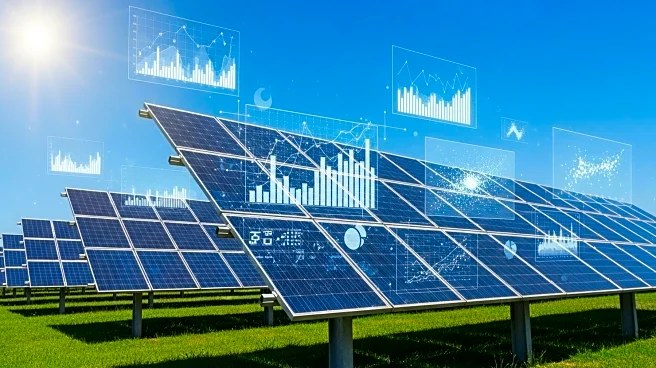What is the story about?
What's Happening?
Utility-scale solar projects are expanding rapidly, with Texas and Florida leading in solar capacity installations. This growth highlights the need for improved predictive modeling to manage the financial risks associated with renewable energy forecasting. Traditional forecasting methods, often reliant on spreadsheets and manual processes, are insufficient to handle the complexities of modern grid operations. Utilities face challenges such as overproduction or underproduction, which can lead to financial losses and penalties. To address these issues, utilities are adopting advanced technologies like machine learning and artificial intelligence to enhance forecasting accuracy. These tools enable operators to run multiple scenarios, adapt to real-time conditions, and make informed decisions, ultimately improving financial efficiency and reliability.
Why It's Important?
The shift towards smarter predictive modeling in utility-scale solar is crucial for financial stability and sustainability in the energy sector. Accurate forecasting allows utilities to optimize their operations, reduce costs, and improve the reliability of renewable energy sources. This is particularly important as the demand for clean energy accountability grows, with stakeholders requiring transparent and data-backed sustainability reports. By leveraging advanced technologies, utilities can better manage the uncertainties of intermittent energy resources, volatile markets, and fluctuating demand patterns. This not only enhances their market differentiation but also supports broader environmental goals by ensuring efficient use of solar assets and reducing imbalance fees.
What's Next?
Utilities are expected to continue integrating advanced forecasting technologies to improve their operational efficiency and financial health. As these tools become more widespread, utilities will likely see increased confidence in their ability to manage renewable energy portfolios. This could lead to more strategic investments in solar projects and greater adoption of distributed energy resources. Additionally, the enhanced transparency and accountability provided by these technologies may drive further regulatory and policy developments aimed at supporting clean energy initiatives. Stakeholders, including commercial customers and energy providers, will benefit from more precise sustainability metrics and improved environmental performance disclosures.
Beyond the Headlines
The adoption of smarter predictive modeling in utility-scale solar has broader implications for the energy sector. It represents a shift towards more data-driven decision-making, which could influence regulatory frameworks and industry standards. The increased use of machine learning and AI in energy forecasting may also spur innovation in related fields, such as energy storage and grid management. Furthermore, the emphasis on transparency and accountability could lead to greater public trust in renewable energy initiatives, encouraging more widespread adoption and investment in clean energy technologies.
AI Generated Content
Do you find this article useful?















